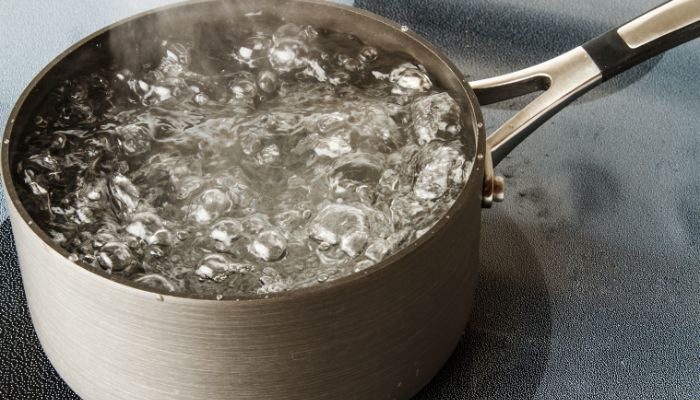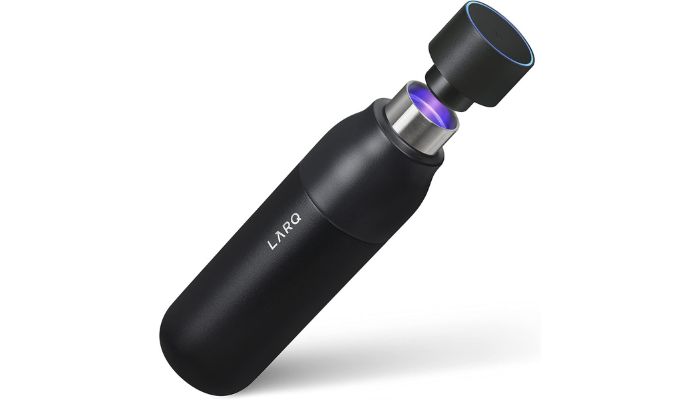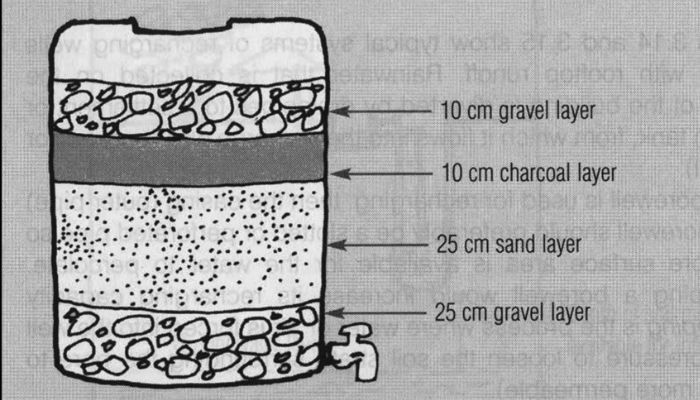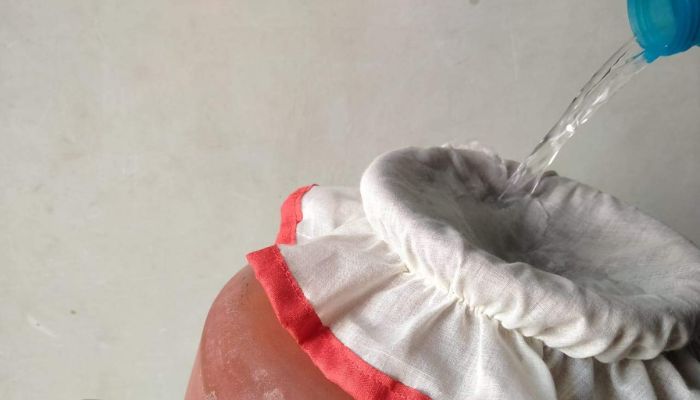Contaminated water can carry harmful bacteria, viruses, and parasites that cause illnesses such as cholera, dysentery, and giardia. Purifying water removes or neutralizes these contaminants, making it safe for drinking and cooking.
During emergencies, such as natural disasters, access to clean water can become limited, increasing the risk of illness. Travelers and outdoor enthusiasts often face similar risks when accessing untreated water from lakes, rivers, or local sources.
1. Simple Household Methods
Purifying water at home doesn’t require expensive equipment. Several simple methods can effectively remove contaminants and make water safe to drink. These techniques are practical, affordable, and easy to apply using common household items.
Boiling
Boiling is one of the most reliable and accessible methods for purifying water. Heating water to a rolling boil for at least one minute (or three minutes at higher altitudes) kills most bacteria, viruses, and parasites.

This method is effective in emergencies or when water quality is uncertain.
- Pros: Kills pathogens quickly and requires no special equipment.
- Cons: Does not remove chemicals, heavy metals, or sediments. Boiled water may taste flat (which can be improved by aerating it – pouring between containers).
Filtration
Household water filters are effective at removing sediments, chlorine, and some bacteria. Filters with activated carbon improve taste and remove contaminants like lead and pesticides.

Ceramic filters can also block bacteria and protozoa. Pitcher filters, faucet attachments, and under-sink systems are commonly available options.
- Pros: Improves taste, removes many contaminants, and is easy to use.
- Cons: Filters must be replaced regularly. Not all filters remove viruses or heavy metals.
Chemical Purification
Adding chemicals like chlorine bleach or iodine disinfects water by killing microorganisms. Unscented household bleach (sodium hypochlorite) can be used – add 2 drops per liter (or 8 drops per gallon), stir, and let stand for 30 minutes. For iodine, use 5 drops per liter of clear water or 10 drops if the water is cloudy.
- Pros: Portable, easy for large quantities, and works quickly.
- Cons: Does not remove chemicals or sediments. Iodine-treated water should not be consumed long-term (especially by pregnant women).
2. Water Purification for Travel and Outdoors
Streams, lakes, and even tap water in some regions can contain harmful bacteria, parasites, or chemicals. Portable water purification methods ensure safe hydration wherever you are, preventing illness and allowing for greater independence.
Portable Water Filters
Portable filters are compact and easy to use, making them essential for hiking, camping, and international travel.

These filters work by physically removing bacteria, protozoa, and sediments as water passes through.
- Types:
- Straw Filters – Allow users to drink directly from water sources by filtering in real-time.
- Pump Filters – Draw water through a filter using a manual pump, ideal for larger quantities.
- Bottle Filters – Equipped with built-in filters for convenient on-the-go purification.
- Pros: Lightweight, reusable, and effective against most pathogens.
- Cons: May not filter out viruses or chemicals unless specified. Filter cartridges need replacement over time.
UV Light Purifiers
UV purifiers use ultraviolet light to sterilize water by killing bacteria, viruses, and parasites. A small, battery-powered device is submerged in water and stirred for about 60 seconds per liter.

- Pros: Kills viruses that filters may miss, easy to carry, and works quickly.
- Cons: Does not remove sediments or chemicals. Requires batteries or charging. Water must be clear for UV light to be fully effective.
Purification Tablets and Drops
Chemical purification tablets and drops (chlorine or iodine-based) are widely used by travelers and outdoor enthusiasts. These are added to water and left to disinfect for 30 minutes to 4 hours, depending on the chemical and water temperature.
- Pros: Lightweight, compact, and easy to store. Ideal for emergency kits.
- Cons: Leaves a taste, may take longer to purify, and is less effective in murky water. Not recommended for long-term use.
Boiling (for Outdoor Use)
Boiling remains the most reliable method in outdoor settings. When no other tools are available, boiling water over a campfire or portable stove for 1-3 minutes kills most pathogens.
- Pros: Simple, effective, and requires no special equipment.
- Cons: Time-consuming and requires fuel. Does not remove chemicals or sediments.
3. Advanced Home Water Purification Systems
For households seeking long-term water safety, advanced purification systems provide thorough protection against contaminants. These systems go beyond basic filtration by removing harmful chemicals, heavy metals, and pathogens, ensuring consistently clean and safe water.
Reverse Osmosis (RO) Systems
Reverse osmosis uses a semi-permeable membrane to filter out contaminants, including lead, arsenic, fluoride, and nitrates. Water is forced through the membrane, leaving impurities behind. RO systems are installed under sinks or as whole-house solutions.

- Pros: Removes up to 99% of contaminants, including heavy metals and dissolved solids. Improves taste and odor.
- Cons: Wastes water during the filtration process (typically 3-4 gallons for every gallon purified). Slower filtration speed.
Distillation Systems
Distillation purifies water by boiling it and capturing the steam, leaving contaminants behind. The condensed steam forms clean, purified water.

This process removes bacteria, viruses, heavy metals, and most chemicals.
- Pros: Extremely effective at removing contaminants. Ideal for purifying water with high levels of heavy metals or pathogens.
- Cons: Energy-intensive and slow. Distilled water lacks natural minerals, which some find undesirable for taste.
Ultrafiltration (UF) Systems
Ultrafiltration uses hollow fiber membranes to remove particles, bacteria, and viruses, but it allows minerals to pass through. Unlike RO, UF does not require electricity, making it a more energy-efficient option.
- Pros: Removes pathogens and sediment while retaining beneficial minerals. No water waste.
- Cons: Does not remove dissolved salts, heavy metals, or certain chemicals. Best for microbiological contaminants.
Whole-House Filtration Systems
Whole-house filtration systems treat all the water entering a home, ensuring purified water from every tap. These systems typically combine sediment filters, carbon filters, and UV or RO units.
- Pros: Comprehensive coverage for all water outlets. Reduces chlorine, sediment, and contaminants throughout the home.
- Cons: High initial cost and ongoing maintenance. Systems need customization based on local water quality.
4. Natural and Emergency Methods
In emergencies or when access to advanced purification systems is limited, natural and improvised methods can make water safer to drink. While these techniques may not remove all contaminants, they can significantly reduce health risks, especially in survival situations or during natural disasters.
Charcoal and Sand Filtration
A simple DIY filter using layers of charcoal, sand, and gravel can remove large particles and improve water clarity. Charcoal, in particular, helps absorb impurities, odors, and some chemicals.

- How to Make It:
- Layer fine sand, charcoal, and gravel in a container (like a plastic bottle or bucket).
- Pour water slowly through the filter.
- Repeat the process for better results.
- Pros: Easy to construct using natural materials. Reduces sediments and some contaminants.
- Cons: Does not eliminate viruses or bacteria. Additional purification (boiling or chemical treatment) is required.
Cloth Filtration
Cloth filtration involves passing water through a clean cloth (such as cotton or a tightly woven fabric, or use Muslin) to remove large debris and visible particles.

This method is often used as a pre-filter before boiling or chemical treatment.
- Pros: Simple and accessible. Removes dirt, insects, and larger particles.
- Cons: Ineffective against microorganisms and dissolved contaminants.
Boiling
Boiling remains the most reliable emergency water purification method. Heating water to a rolling boil for at least one minute (or three minutes at higher altitudes) kills most pathogens, including bacteria, viruses, and parasites.
- Pros: Highly effective and simple. No special equipment required.
- Cons: Requires fuel and time. Boiling does not remove chemicals or heavy metals.
Plant-Based Coagulants (Moringa Seeds)
Certain plants, like moringa seeds, can purify water by causing particles and impurities to clump together and settle. Crushed moringa seeds are added to cloudy water, stirred, and allowed to sit until impurities settle at the bottom.
- Pros: Natural, eco-friendly, and inexpensive. Can clarify murky water.
- Cons: Requires additional disinfection (boiling or chemical treatment) to kill microorganisms.
5. Testing Water Purity
Even if water appears clear, it may contain bacteria, heavy metals, or chemicals that can pose health risks. Regular testing helps identify potential hazards and ensures that purification methods are working effectively.
Home Water Testing Kits
Home testing kits provide a simple and convenient way to check water quality. Dip a test strip in water or add drops to a sample. Results are shown through color changes, which are compared to a chart. These kits often test for common contaminants, including:
- Bacteria – Detects harmful microorganisms like E. coli.
- pH Levels – Indicates acidity or alkalinity, which can affect taste and plumbing.
- Chlorine – Measures residual chlorine levels from disinfection.
- Nitrates/Nitrites – Common in agricultural runoff and can harm infants.
- Lead and Heavy Metals – Tests for toxic metals that may leach from pipes.
The good and bad side is:
- Pros: Affordable, easy to use, and provides quick results.
- Cons: Limited to specific contaminants. Not as precise as lab testing.
Professional Water Testing
For more comprehensive analysis, professional laboratories can conduct detailed water tests. This method is ideal for detecting a broader range of contaminants, including pesticides, industrial pollutants, and heavy metals.
- When to Use:
- After moving to a new home.
- If your water source changes or is near agricultural/industrial sites.
- Annually, for well water users.
- Pros: Highly accurate and detailed. Can detect rare or dangerous contaminants.
- Cons: More expensive and results may take several days.
Digital Water Quality Meters
Digital meters test for parameters like total dissolved solids (TDS), conductivity, and temperature. TDS meters provide a general indication of the number of particles dissolved in water, which can point to contamination.
- Pros: Portable, reusable, and provides real-time results.
- Cons: Does not identify specific contaminants – only measures overall purity.
Visual and Taste Indicators
Sometimes, water quality issues can be identified without tools:
- Cloudy or Discolored Water – Indicates sediment, rust, or organic material.
- Strange Odor – A sulfur smell suggests bacteria, while chlorine-like smells point to chemical treatment.
- Metallic Taste – May indicate high levels of iron, lead, or copper.
While these signs can signal problems, they don’t confirm the exact cause. Testing is necessary for a clearer diagnosis.
